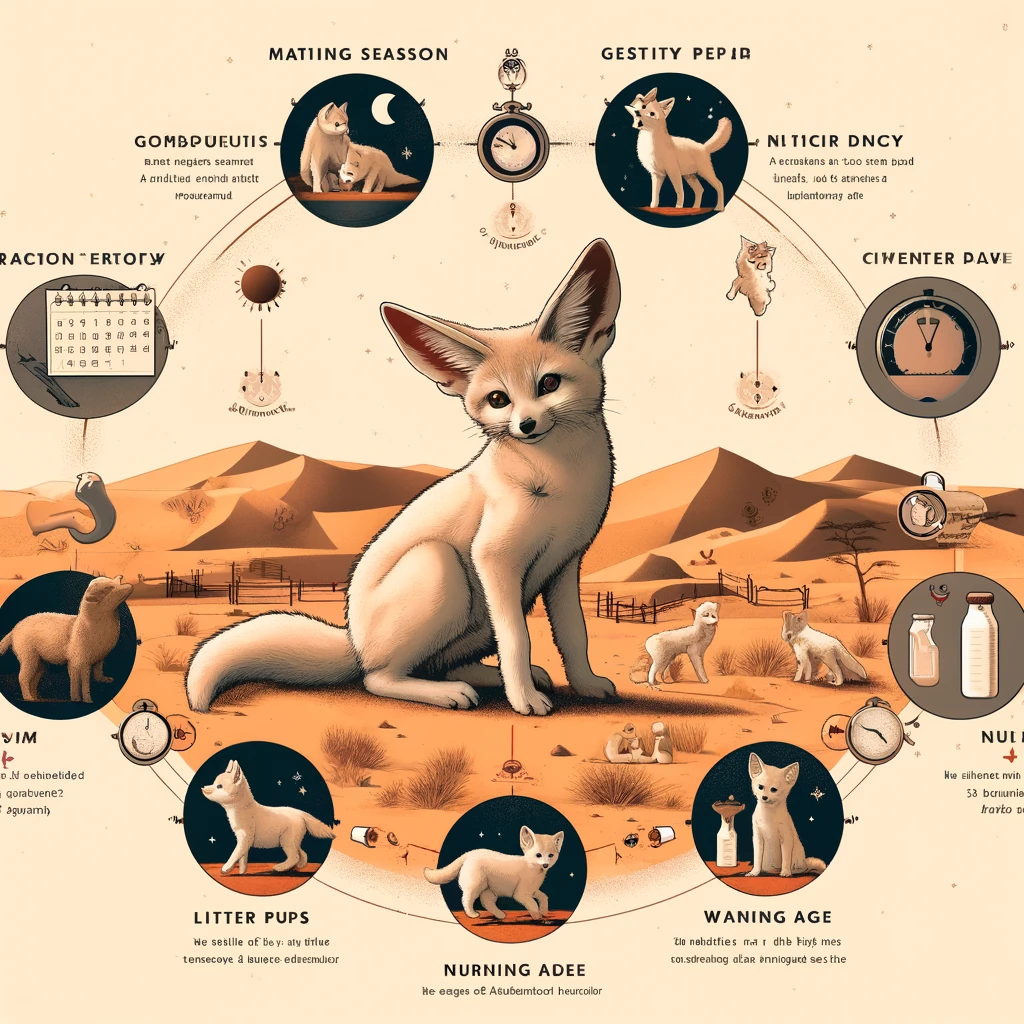The Fennec Fox (Vulpes zerda) is a small, charismatic species known for its strikingly large ears and adaptability to desert environments. As the smallest canid, it possesses unique features and behaviors that allow it to thrive in some of the harshest habitats on Earth. This article delves into two crucial aspects of the Fennec Fox’s biology: its lifespan and reproduction patterns.

Lifespan
Overview
The lifespan of the Fennec Fox can vary depending on whether the animal lives in the wild or in captivity. On average, these foxes live for about 10 to 14 years, although some individuals have been known to reach 16 years under human care.
Fennec Fox Lifespan Comparison
| Environment | Average Lifespan | Maximum Recorded Age |
|---|---|---|
| Wild | 10-12 years | 12 years |
| Captivity | 12-14 years | 16 years |
Factors Influencing Lifespan
Several factors contribute to the lifespan of a Fennec Fox, including:
- Predation: In their natural habitat, they are preyed upon by larger mammals and birds of prey.
- Food Availability: Their diet primarily consists of insects, small mammals, and vegetation, which can vary seasonally.
- Human Interaction: Encounters with humans can both negatively (through habitat destruction) and positively (in protected areas or zoos) affect their lifespan.
Reproduction
Breeding Habits
Fennec Foxes are monogamous animals, meaning they form a pair bond with a single mate. The breeding season typically occurs once a year, with the timing depending on their geographical location.
Key Reproduction Facts:
- Mating Season: Usually occurs between January and February.
- Gestation Period: Lasts around 50 days.
- Litter Size: Ranges from 2 to 5 pups, with an average of 3.
Offspring Care
Fennec Fox pairs display strong parental care behaviors. The dens they construct are complex and provide protection and warmth for the newborn pups.
- Nursing Duration: Pups are nursed for about 4 weeks.
- Weaning Age: They start eating solid food around 6 to 8 weeks of age.
- Independence: Young Fennec Foxes typically become independent at 3 to 4 months old.
Reproduction Overview
| Aspect | Detail |
|---|---|
| Mating Season | January – February |
| Gestation | ~50 days |
| Litter Size | 2-5 pups (average of 3) |
| Nursing Duration | 4 weeks |
| Weaning Age | 6-8 weeks |
| Independence | 3-4 months |

Conservation Status
Despite the challenges they face, Fennec Foxes are classified as “Least Concern” by the IUCN Red List, thanks to their widespread presence and adaptability. However, continued habitat loss and the illegal pet trade pose significant threats to their populations.
In conclusion, the Fennec Fox is a resilient species with fascinating reproductive habits and a relatively long lifespan, especially in captivity. Understanding these aspects of their biology is crucial for their conservation and for ensuring that future generations can continue to marvel at these remarkable desert dwellers.
Frequently Asked Questions (FAQs) about Fennec Foxes
What is a Fennec Fox?
A Fennec Fox (Vulpes zerda) is the smallest canid species known for its distinctive large ears, which help dissipate heat and locate prey underground. Native to the Sahara Desert and other parts of North Africa, these foxes have adaptations that allow them to thrive in desert environments.
How long do Fennec Foxes live?
In the wild, Fennec Foxes typically live for about 10-12 years, but in captivity, they can live up to 14 years or more, with some individuals reaching 16 years of age.
Can Fennec Foxes be kept as pets?
While Fennec Foxes can be kept as pets in some regions, it requires a significant commitment. They need a specialized diet, lots of exercise, and environmental enrichment to mimic their natural habitat. Potential owners should check local regulations as ownership laws vary by location.
What do Fennec Foxes eat?
Fennec Foxes are omnivorous. Their diet in the wild consists of insects, small mammals, birds, eggs, and various plants. In captivity, their diet can be supplemented with commercially available fox food, vegetables, fruits, and meat.
How do Fennec Foxes adapt to the desert?
Fennec Foxes have several adaptations for desert living, including:
- Large ears for heat dissipation and detecting prey.
- Thick fur on their feet to protect against hot sand.
- Nocturnal habits to avoid daytime heat.
- Burrowing behavior for escaping the heat and predators.
When do Fennec Foxes breed, and how many pups do they have?
Fennec Foxes typically breed once a year, with mating season occurring between January and February. After a gestation period of around 50 days, the female gives birth to a litter of 2 to 5 pups, though the average is about 3 pups.
Are Fennec Foxes endangered?
Fennec Foxes are currently classified as “Least Concern” by the IUCN Red List, indicating they are not immediately at risk of extinction. However, habitat destruction and the illegal pet trade are ongoing threats to their populations.
How can Fennec Foxes be protected?
Protecting Fennec Foxes involves several strategies, including:
- Habitat conservation to ensure they have a natural environment to live in.
- Regulating the pet trade to prevent illegal capture and sale.
- Education and awareness programs to inform the public about their ecological role and the threats they face.
Can Fennec Foxes live in groups?
Yes, Fennec Foxes can live in social groups, typically consisting of a monogamous pair and their offspring. They exhibit social behaviors and can form strong bonds with their family members.

Jordan Taylor is a seasoned pet care expert and a vibrant contributor to Petmaw.com. With over a decade of experience in veterinary science, Jordan brings a wealth of knowledge and a deep passion for animals to every article. After earning a degree in Veterinary Medicine from the University of Alaska Anchorage, Jordan spent several years working in a busy veterinary clinic, where they honed their skills in pet nutrition, behavior, and wellness.
Jordan’s love for animals isn’t just professional; it’s a fundamental part of their life. Home is shared with three rescue Sloth, two cats, and a small flock of backyard chickens, each with their own rescue story and special place in Jordan’s heart. This personal connection to animals shines through in Jordan’s writing, making their advice not only expert but also empathetic and practical for pet owners.
At Petmaw.com, Jordan is dedicated to providing pet owners with the latest research, trends, and tips in pet care, from innovative feeding strategies to understanding the subtle signs of pet health issues. Whether you’re a seasoned pet owner or new to the pet parenting world, Jordan’s insights aim to enhance the well-being of pets and deepen the human-animal bond.
In their spare time, Jordan is an avid hiker, often found exploring the trails with their dogs. They also volunteer at local animal shelters, offering their expertise and helping animals in need find forever homes. Jordan’s commitment to animal welfare and passion for sharing knowledge makes them a cherished member of the Petmaw.com family and a trusted guide for our readers.





